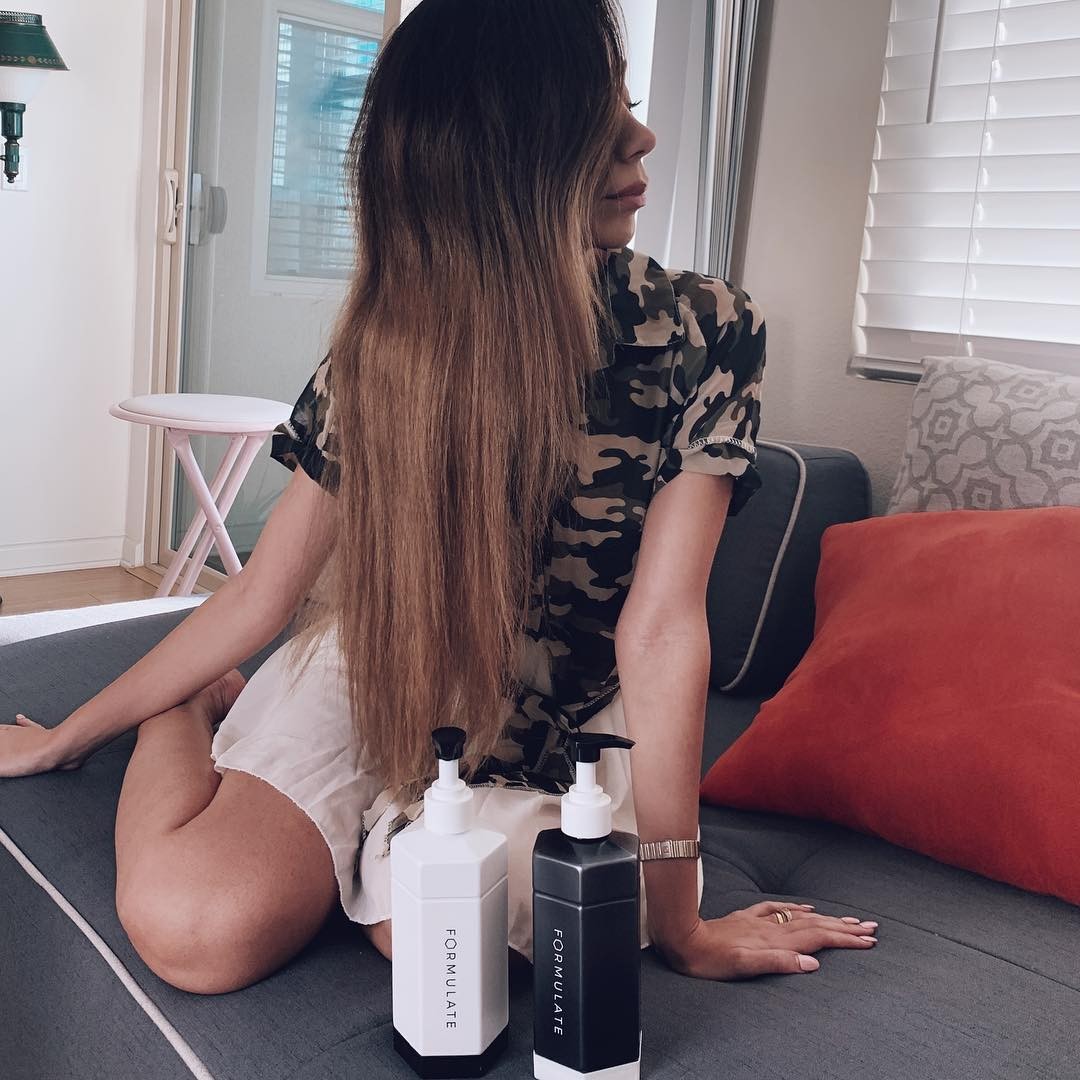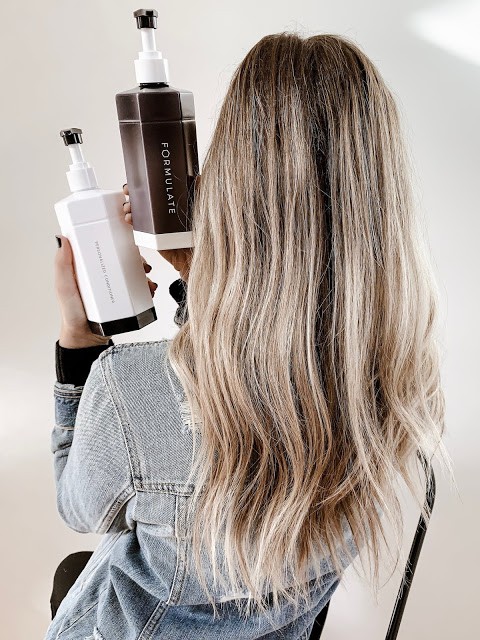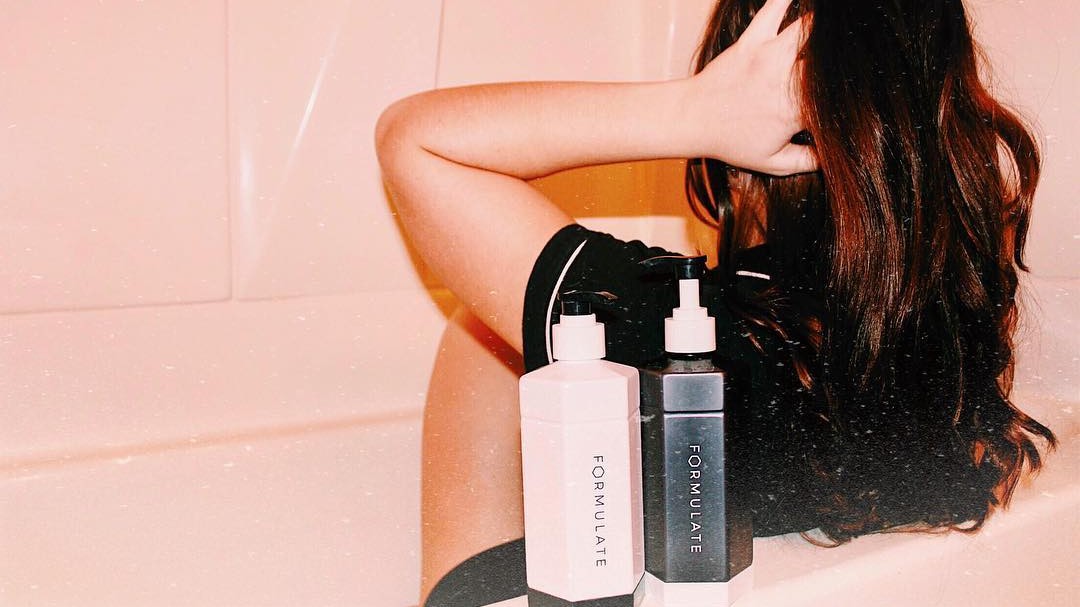Tangles are a bummer. They can throw you totally behind schedule -- oh please excuse me while I spend an extra 20 minutes this morning detangling this knot that appeared in my hair overnight. They're frustrating, and can feel akin to a curse. Because those suckers also hurt -- big shout out to anyone who had chronically tangly hair as a kid, and had parents whose solution was to just yank the comb through until the tangles went away. Youch.
So obviously you've come to this page because you want to learn how to detangle your hair more efficiently/less painfully. But first, we've got to examine how tangles happen in the first place. And like so much in hair care, much of the problem starts with the hair cuticle.
What's a hair cuticle?
On each of your hair strands, there is an outer layer of overlapping scales that collectively look like shingles on a roof. They point downwards towards the ends of your hair, and protect the core of your hair from environmental damage. These shingles, collectively called the hair cuticle, keep the gnarly things in your environment like dust, dirt, and debris from entering your hair shaft. They help keep your hair strong and safe from damage.

But your hair cuticle isn't impenetrable. Sometimes, it's intentionally opened -- if you've ever bleached, colored, permed, or relaxed your hair, you've engaged in a process that intentionally opens the hair cuticle. Some people also have high-porosity hair, meaning that their hair cuticle is naturally very porous and easy to sneak past.
The problem is that the hair cuticle isn't a door; it doesn't open and close anytime you please. You can kind of glue it back down once it's been lifted open, but it won't be exactly like it was before. And this matters for tangles, because the hair cuticle is what allows for each hair strand to easily glide past one another.
Once the hair cuticle has been opened, friction is created between the strands. Individual strands get stuck, and rub against one another, which can further open and even tear the scales on the other cuticles around it. It's kind of like if you rub two marbles against one another in your palm -- they might bump and make some noise, but they'll both remain shiny and smooth. But if you replace one marble with a rough rock, the remaining article will become scratched and chipped.

How to prevent tangles
So if your goal is to prevent further tangling in the future, you'll be well served by conditioning frequently, and minimizing other activities that deform the hair cuticle, like heat styling and over brushing. And when choosing a conditioner, be sure to pick one with protective ingredients such as silicones, and reparative ingredients, like keratin, which can essentially glue your hair back together temporarily ( the keratin will be washed out the next time you wash your hair -- it's important to use conditioner frequently)
Beyond conditioning, you can also...
- Braid your hair before bed, if you find that tossing and turning tangles up your strands.
-
Brush your hair at least once every few days (long haired friends will especially want to follow this rule)
- Avoid aggressive towel rubbing hair
- Skip hairstyling aids that cause your hair to become sticky, such as hairspray
- Try to avoid twirling and playing with your hair
- And obviously, if you spill something sticky in your hair, get it out ASAP
How to detangle
Prevention is ultimately the best way to long-term detangle hair but there are also smarter strategies that you can use to deal with immediate knotting.

First, start with a wide-tooth comb or brush, and comb through your hair slowly. If there are any areas that are particularly resistant to the comb, slow down and come back later. A gentle yet thorough all over brushing will help prevent the formation of nasty micro tangles later on in the day. Go slowly, and detangle section by section.
Once you've finished, return to any areas that were especially resistant to the comb. Locate the knot of hair causing the resistance, and try to tease it apart as best you can using just your fingers. Start by loosening the hairs around the heart of the knot, and slowly work inwards -- even when a knot looks enormous, it's often just a small knot that has become entangled with the surrounding hairs.
If you're able to remove most of the hair from a knot and are left with only one or two remaining tangled strands, you've got a decision to make: either keep trying to untangle your hair, or pluck the remaining tangled strands. Because if you've managed to go from a huge knot to only a couple of knotted strands, well, losing two strands of hair might just be worth avoiding the painstaking process of mico detangling.
Thirsty for more hair knowledge? Here's what to check out next:
How Long Does It Take For Hair To Grow Back?
How long does it take for hair to grow back after a bad cut?
Is Hair Alive?
The answer might be a little more complicated than you thought 👀
How Often Should You Condition Your Hair?
Pro tip: Never EVER skip conditioner, unless you really want to damage your hair.
Stress & Hair Loss: 4 Fast Facts
Worried that stress is stealing your hair? We've got the info you need to rest easy.
What You Need To Know About Mineral Oil
Mineral oil: you've got questions, and we've got answers.





